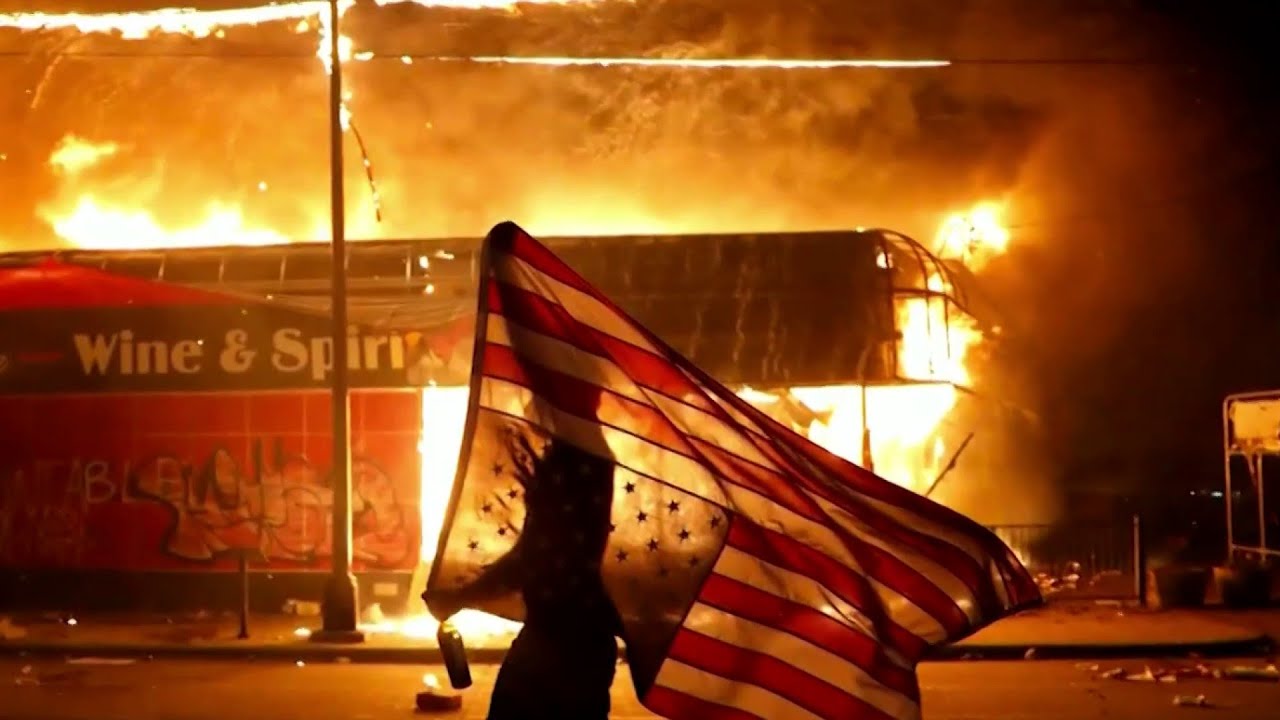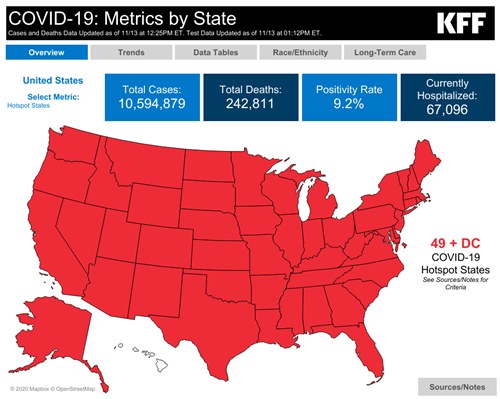Coronavirus: When Will be the End of USA Darkest Hour

When Will be the End of USA Darkest Hour
As American society is torn apart and antagonism continues to intensify, the new government will still face constraints from all parties in the process of implementing the anti-epidemic policy. It may not be easy for the United States to get out of this crisis.
According to the latest statistics from Johns Hopkins University in the United States, as of 5:30 on November 16, Beijing time, the cumulative number of confirmed cases of new coronary pneumonia in the United States reached 11,000,984, and an increase of 141,323 cases in the past 24 hours. In less than a week, the cumulative number of confirmed cases of new crown pneumonia in the United States has soared from 10 million to 11 million, setting the fastest record since the outbreak of the new crown. On November 13, the Case Family Foundation, which has been tracking the new crown epidemic in the United States for a long time, published the latest epidemic map on its website. Except for Hawaii, which is far away in the Pacific Ocean, all 49 states in the United States and Washington DC have become red epidemic hot spots. It can be said that the United States has “fallen as a whole.”

The US population accounts for about 4% of the global population, but its cumulative number of confirmed cases and deaths from new coronary pneumonia account for 20% of the world. Such an anti-epidemic performance can only be described in the words “shocking”. But even so, American politicians are still busy fighting for power. The US political news website Politico believes that as the epidemic spreads, the continued obstruction of the transfer of power to the president may endanger the lives of Americans. The US “Foreign Policy” magazine can’t help lamenting that the spread of the new crown virus in the United States has been out of control and the epidemic has reached the level of a “huge disaster”, while the US government is still busy with political struggles and is indifferent to controlling the epidemic.
The emergence of this chaotic situation is closely related to the intensification of political polarization and social tearing in American society in recent years. In the face of the epidemic, the two parties and their supporters are not considering working together to fight the epidemic, but how to use the epidemic to maximize political benefits, so that the United States’ anti-epidemic work, which should be based on science, has become a stage for the struggle between the two parties. Politico recently reported that almost all 16 Republican governors were prepared to reject Biden’s call for mandatory wearing of masks, but chose to impose new regulations on enterprises and limit the scale of public gatherings.
- Prevent Coronavirus Spreading With Right Mask: 3 Points to Know
- Steps to help prevent the spread of COVID-19 if you are sick
- Test Kit for Coronavirus: SARS-CoV-2 Nucleic Acid Detection Kit (Rapid PCR Fluorescence Method)
- Symptoms (COVID-19)
- How does ZeroVirus protect us from virus?
What is even more pessimistic is that it is still unknown whether the anti-epidemic work, which is trapped in a political whirlpool, can return to the standard of science.
The Centers for Disease Control and Prevention (CDC) and the Food and Drug Administration (FDA), which are the center of the US response to the epidemic, have long been caught in a vortex of political interference. Kamran Abasi, the executive editor of the world-renowned medical journal “British Medical Journal”, recently published an article that in the process of responding to the new crown pneumonia, some US politicians and government agencies suppress science for political and financial self-interest, and the public will have to Pay for this serious corruption, and even pay for it.
On November 13, U.S. President Trump reiterated at the epidemic press conference that the current U.S. government will not implement a nationwide lockdown. In response, Anthony Fauci, director of the National Institute of Allergy and Infectious Diseases, warned that if the U.S. government still refuses to implement a national policy to force citizens to wear masks and maintain safe social distancing, it is expected that by March 1, 2021, the U.S. The number of deaths from new coronary pneumonia will reach at least 439,000. In fact, since the beginning of the outbreak, the White House has refused to listen to the opinions of professionals and epidemic prevention experts, and has been deliberately downplaying the impact of the epidemic: Trump has referred to COVID-19 as the “large flu” more than once, and appointed neuroradiologists with no expertise in epidemics. Medical scientists join the COVID-19 team. At the same time, the White House has considered implementing “herd immunity” in the United States more than once, even though this means that more than 200 million Americans have been infected with the virus.
With the incumbents unwilling to respond to the epidemic, the uneven curve of the epidemic in the United States is still in danger of continuing to rise: University of Minnesota infectious disease scientist Michael Osterholm recently warned that the United States will be very vulnerable in the coming weeks. There may be more than 200,000 new cases in a single day. Many public health experts believe that the United States has actually been struggling in the quagmire of the first wave of epidemics, and the epidemic curve has never dropped to a low enough level, but has “leveled out” between the peaks. In an interview with NBC on November 15th, Osterholm stated that the United States is experiencing “the most dangerous public health crisis since 1918.”
According to the New York Times, the epidemic may eventually become “a close crisis that every American may experience.” Trump said at a press conference on the 13th that he is not sure how the next administration will respond to the epidemic. However, it is obvious that in the context of American social tearing and antagonism continuing to intensify, the new government will still face constraints from various parties in the process of implementing the anti-epidemic policy. It may not be easy for the United States to get out of this crisis.
